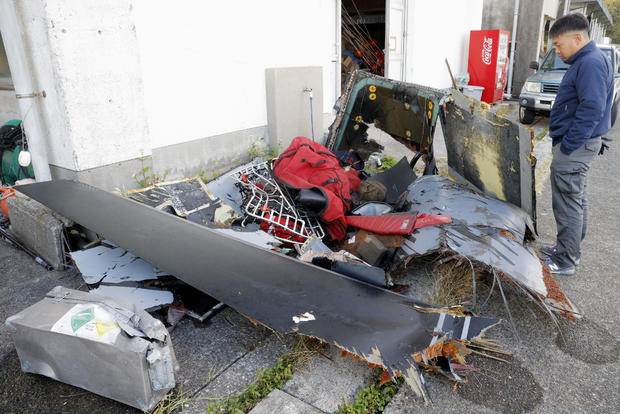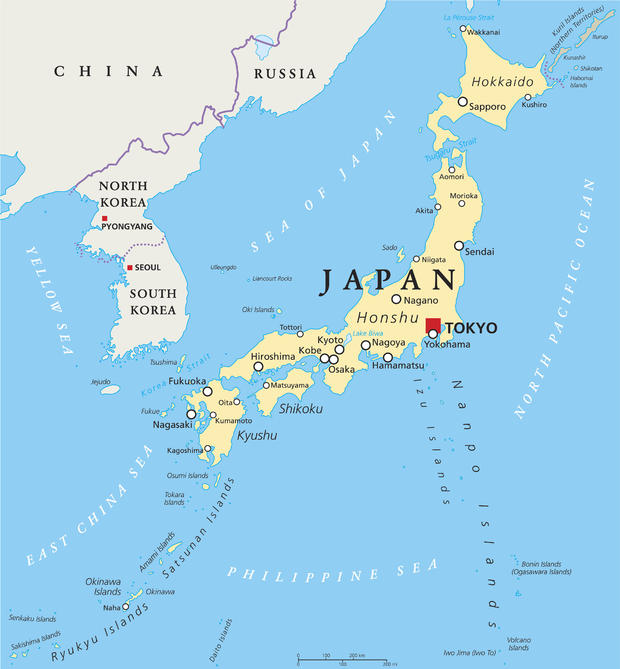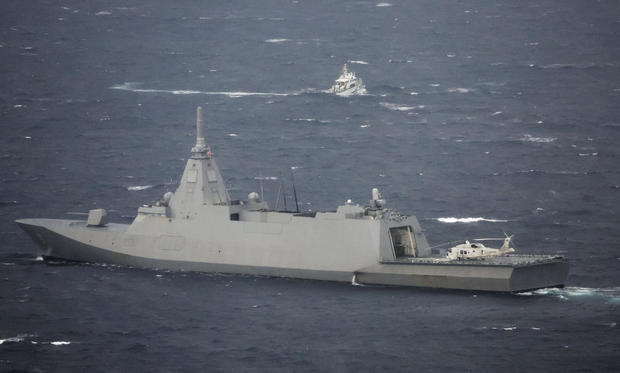Tokyo — Divers from the U.S. military and Japan’s Marine Self-Defense Forces located a significant portion of the fuselage of an Osprey aircraft that crashed last week in southwest Japan, the U.S. Air Force confirmed Monday. The submerged wreckage, which includes the cockpit of the tilt-rotor aircraft, contains the bodies of five of the eight crew members who were on board, the U.S. Air Force Special Operations Command said in a statement.
The statement said the “combined Japanese and United States teams” that have been scouring the waters around the small island of Yakushima “had a breakthrough when their surface ships and dive teams were able to locate remains along with the main fuselage of the aircraft wreckage. The dive teams were able to confirm five additional crew members from the original team of eight that were involved with the crash.”
It said two of the five crew members found in the fuselage Monday had been recovered and there was “an ongoing combined effort to recover the remaining crew members from the wreckage.” The Air Force declined to identify the five people found inside the wreckage on Monday.

Kyodo via REUTERS
Only one of the total eight crew members’ remains had been found before Monday. That person was identified last week by the Air Force as Staff Sgt. Jacob Galliher, 24. The young father from Massachusetts had been assigned to the 43rd Intelligence Squadron as a direct support operator.
The Air Force said the U.S. aircraft carrier Carl Vinson, its air wing and other assets including unmanned vehicles had joined the search operation. Divers were also taking part in the huge search operation.
Last week’s crash of the U.S. Air Force CV-22 was the first-ever fatal Osprey accident in Japan. The aircraft, assigned to Yokota Air Base in Tokyo, had been on a training flight. It departed from Marine Corps Air Station Iwakuni in Yamaguchi Prefecture but then requested an emergency landing on the tiny island of Yakushima just before crashing off of its shore.
Eyewitnesses said the aircraft flipped over and burst into flame before plunging into the ocean. The aircraft had been headed for Kadena Air Base on Okinawa, the largest U.S. base in the region.
Japan’s Coast Guard, aided by local fishermen, have been conducting round-the-clock search and rescue operations off Yakushima, in Kagoshima Prefecture, since the crash.
Some pieces of the wreckage found in the water have been handed over to the U.S. military, which has exclusive rights to investigate the accident under the Status of Forces Agreement (SOFA) with Japan.

Kyodo via REUTERS
Japan was also forced to become a bystander during the investigation into a previous Osprey crash off Okinawa in 2016, which left two U.S. airmen injured.
The new crash — the latest in a series of accidents involving the Osprey around the world — has triggered widespread anger and alarm in Japan, a vital U.S. ally. Tokyo formally asked the U.S. military to ground its Ospreys in the country until thorough inspections could be carried out to confirm their safety.
U.S. forces have continued flying the aircraft, however, drawing warnings from some observers that the incident could damage bilateral ties between Washington and Tokyo.
Japan, the only other nation whose military flies the aircraft, has temporarily grounded its Ospreys.
Japan’s Ministry of Defense said the U.S. has a total of six Ospreys based at Yokota and 24 at the Futenma base on Okinawa. The hybrid aircraft was first deployed in Japan over a decade ago, able to take off and land vertically like a helicopter, it can then change the angle of its rotors to fly like a plane, at high speed.

Darren England / AP
If all of the crew members died on the Osprey that went down off Yakushima last week, it will be the deadliest accident involving the aircraft ever. There have been a spate of fatal U.S. Osprey crashes in recent years, however, most recently during a multinational training exercise on an Australian island in August, which killed three U.S. Marines and left eight others hospitalized.
All five U.S. Marines on board an Osprey died the previous summer when their aircraft crashed in the California desert.
Mainichi, a left-of-center newspaper, urged Tokyo to insist on participating in the investigation into last week’s crash and said Japan’s continued sidelining after serious military accidents underscored the need for revisions to the bilateral agreement under which Japan hosts tens of thousands of U.S. forces.
A new $8.6 billion, five-year, host-nation support budget was agreed to by Japan just last year, to run through 2027.
The incident is straining U.S.-Japan relations just as Tokyo rushes to fortify its southwest flank amid China’s aggressive expansion in the region, and it could scuttle Japan’s efforts to gain local support for a planned deployment of Ospreys in the southwest Saga Prefecture in 2025.

Getty Images/iStockphoto
